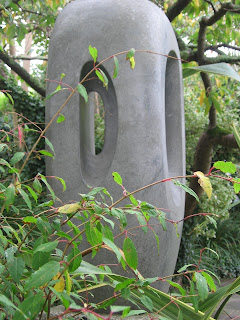


We have been experimenting with 3-D, I certainly found it a struggle. I tend to think about 3-D as something which can be viewed from several different angles. So far so good! I recently visited St Ives in Cornwall and I saw the Barbara Hepworth Museum. In the garden which is on a steep slope is a collection of her wonderful sculptures. As you walk around you keep getting very different views, but what really struck me was a sense that she could feel a sculpture in all its dimensions, from inside out, from top to bottom, turning and rotating it on an axis and at different angles. I'm not sure my brain has the capacity to that, I have problems with garments turned inside out!
Merete








.JPG)
.JPG)
.JPG)
.JPG)































